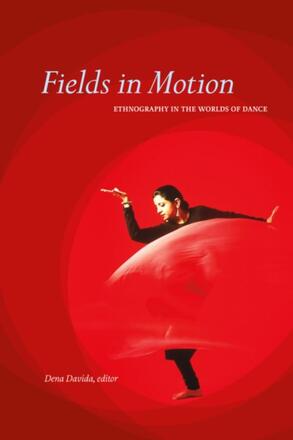
Fields in Motion
Ethnography in the Worlds of Dance
Description
Fields in Motion: Ethnography in the Worlds of Dance examines the deeper meanings and resonances of artistic dance in contemporary culture. The book comprises four sections: methods and methodologies, autoethnography, pedagogies and creative processes, and choreographies as cultural and spiritual representations. The contributors bring an insiders insight to their accounts of the nature and function of these artistic practices, giving voice to dancers, dance teachers, creators, programmers, spectators, students, and scholars. International and intergenerational, this collection of groundbreaking scholarly research points to a new direction for both dance studies and dance anthropology. Traditionally the exclusive domain of aesthetic philosophers, the art of dance is here reframed as cultural practice, and its significance is revealed through a chorus of voices from practitioners and insider ethnographers.
Reviews
"With voices from 28 contributors spanning five continents, this unique anthology bridges the distance between the viewpoints of the insider (practitioner) and the outsider (researcher) in dance art. Spanning three generations of dance researchers, the essayists are part of the cultural dance communities they are studying and meld insights from their own knowledge and experience with sound anthropological techniques to expand and deepen understanding of dance as it is lived. ... This collection expands the discourse and approaches to dance ethnography and is a welcome, valuable addition to dance scholarship. .. Highly recommended. "
- M.A. Brennan
"A fine research collection addressing the complex issues of ethnicity in postmodern concert dance. ... Fields in Motion provides evocative, sometimes provocative, views into the lives and work of transnational dance artists with hyphenated identities, enduring or thriving under the simultaneous pressures of maintaining traditions (and the cultural values they reinforce) and innovating artistically to rewrite the world, to redance the world in new ways, ultimately constructing bodies (that dance) and meanings (that matter). "
- Adair Landborn
"The authors in Fields in Motion emerge from this unique anthology as engaging dance scholars from various parts of the world. Their words are framed by research on art dance 'at home. ' They share with us, their readers, as they reflect on the views and behaviors of their dancer subjects, whom they researched through an ethnographic lens. Our own horizons expand as we meet these authors, and as we begin to perceive the spreading global dedication to ethnographic research for art dance 'at home. '"
- Joann W. Kealiinohomoku
"Through publishing books like the anthology Fields in Motion: Ethnography in the Worlds of Dance (2012), Davida continues to fuel a vibrant field of dance ethno inquiry in the Canadian academic landscape. Her book continues a tradition of dance anthropology, inspired by Keali’inohomoku, by focusing on artistic dance whereby dance and its aesthetics become emblematic for understanding cultural meaning. This dance anthropology book carves out its own unique angle as an anthology of art world dance ethnography. " —Performance Matters
- Adair Landborn
"Fields in Motion brings together twenty-four scholars interested in approaching dance from an ethnographic perspective. It is therefore a useful "follow up" to Theresa Buckland's edited collection Dance in the Field: Theory, Methods, and Issues in Dance Ethnography (1999). What makes the book special is that the contributors all focus largely on theatre dance, rather than on other genres more embedded within circumscribed communities, generally the domain of anthropologists specializing in dance. Although Joann Kealiinohomoku showed us the way in the late 1960s and 1970s by demonstrating that all dances are culturally rooted, art dance still remains, for many, beyond ethnographic enquiry since it is often perceived as "outside culture." The collection provides rich and diverse approaches to ethnography (polyphonic, multi-sited, auto-, experiential, intimate and so on), to field/dance sites (from small towns in Canada and the USA, to Paris, Helsinki and Toronto; from Taiwan, to Brazil, to New Zealand), and to the subjects of research (from amateurs to professionals; from largely female to male only). The authors take us on exciting journeys and the reader enters the worlds of dancers, spectators and researchers in a variety of social and cultural contexts, sometimes with great intimacy, at other times with more detachment, but always with heightened sensitivity. Reading Fields in Motion allows for discovery of the many ways in which dancing bodies may be socially and culturally mediated so that our understanding of theatre dance gains greater nuances."
- Andrée Grau
"The reflective space between practice, fieldwork, encounters with theory and ethnographic writing is an immensely fertile ground. Connections made between modes of research and professional roles and the distinctive knowledge developed form this position is, to my knowledge, for the first time illuminated by [this] diverse group of scholars.... To me, this volume importantly succeeds in responding to what Davida declares as a fundamental concern, which is to demonstrate the way contemporary dance ethnographers may begin to suspend the weight of the 'dubious colonialist past' (8) of anthropology, thereby, maintaining it relevant to "a globalizing, de-colonizing world in which concepts such as "far-away," "exotic," and "primitive" are now perceived as vestigial remnants of an obsolete and racist western nostalgia, if not the clichéd fare of the travel industries' (8).... The volume also usefully addresses temporal aspects (3) of contemporary "insider" ethnographic research and the way this challenges traditional ethnographic fundamentals.... Although questions around the ability of insightful practitioner-researchers to critically observe the totality of the cultural predicament of the field studied ... remain pertinent, this volume offers significant evidence for the interpretative value of this approach.... Its accessible language and well-integrated reflexive style make this book a potentially very useful introductory volume for dance and, perhaps, other performing arts students even at an undergraduate level."
- Gina Giotaki